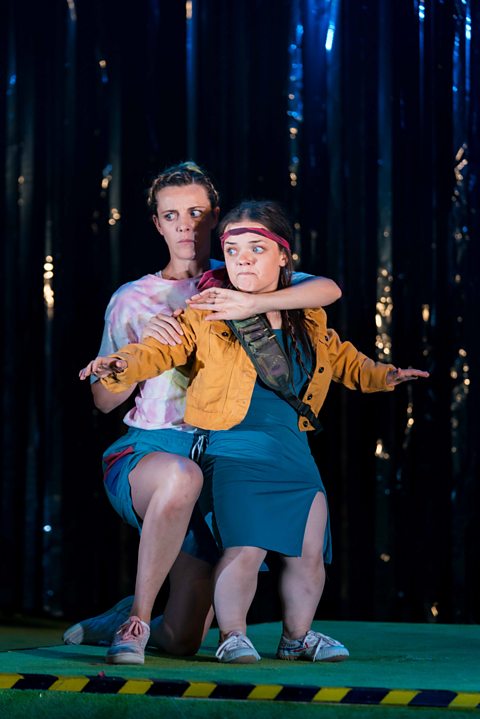The main aspects of a performance
Knowing the acting tools to use for each piece of drama is a skill that is developed with practice. Identifying the performanceÔÇÖs styleHow theatrical ideas are presented on stage., genreThe type of story being told. and formThe conventions or building blocks of the play that the playwright uses to construct it, eg monologues, flashbacks or mime. will often dictate how to perform a particular role, as each of these has conventionThe normal standard practices for doing something..
There are many ways an actor might change their approach depending on the performanceÔÇÖs genre, style or form. For example:
- musical theatre - usually clear, strong and dynamic speech and movement and lots of costumes, staging and effects are used to help communicate meaning
- classical, eg Shakespeare or Ancient Greek - often no props or set are used, instead relying on clear speech and more exaggerated acting to communicate the action
- physical theatre - emphasising the use of physical movement, eg dance and mime, making the performersÔÇÖ physicalityUse of the body. the focus

Performer to audience relationship
Performers might interact with the audience, eg through direct addressWhen a speaker or writer directly addresses another individual. or audience participationWhen the audience are involved during a performance., but most of the time the performer to audience relationship is built more subtly, eg through eye contact and the use of space. The style of the performance will decide the methods of building the performer to audience relationship. It can be experimented with, eg by using downstage, close to the audience, for important or significant moments.
Engagement
To engage an audience, performers need to be completely focused and remain in character throughout, known as a sustained performanceWhen a performer stays completely in role throughout the entire play.. This can be tiring and can take a lot of practice throughout the rehearsalThe process of preparing a production and getting it ready for performance. process.
Health and safety
Performers need to consider their own health and safety, as well as that of the audience. It is important to ensure that performers warm upTo ease the body or voice into activity to prevent injury, eg through stretching or gentle exercises. both physically and vocally during rehearsals and before going on stage for any performance.
More guides on this topic
- Responding to a stimulus - OCR
- Developing an idea - OCR
- Selecting a genre or performance style - OCR
- Selecting a practitioner - OCR
- Rehearsing for a performance - OCR
- Refining a performance - OCR
- Designing for productions - OCR
- Health and safety considerations - OCR
- Creating a portfolio or devising log - OCR